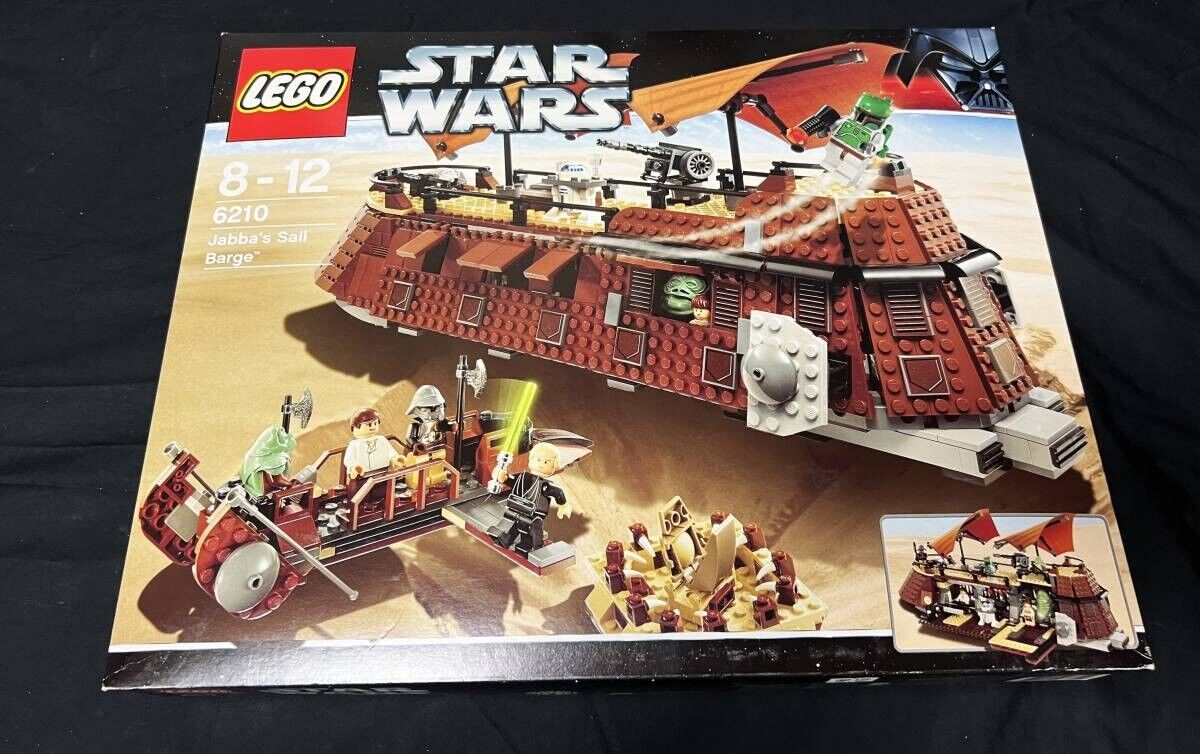For this Journal I chose to analyze LEGO instructions, not a map in the traditional sense but I’d argue it can be classed under “a set of maplike instructions”, and can be analyzed through Wood’s ten codes. In particular I chose The LEGO Star Wars set 6210: Jabba’s Sail Barge , a set I had as a child. While not the most complex lego set, I think it can serve as a good example of how maps, or map-like objects, communicate complex meaning – towards children nonetheless. While the instructions were designed to be accessible to young builders, much of my understanding also relied on prior familiarity with LEGO conventions and the Star Wars narrative. Using Denis Wood’s ten cartographic codes, it becomes evident how the set conveyed meaning both explicitly and implicitly.

The intrasignificant codes can be applied to all LEGO sets, as each one follows LEGO patented guidelines, regardless of theme. From the outset, the instructions made good use of the iconic code. Each brick is rendered with precise proportions and accurate colors, allowing for clear visual identification. This code was explicitly present, there was no ambiguity in what each piece looked like or where it belonged in the step-by-step process. However, some aspects, such as how tightly pieces should fit together or the importance of structural stability, were left implicit. I learned those lessons through hands-on experience and occasional trial and error.
The linguistic codes are minimal, with zero text in the actual instructions, which consist primarily of step numbers and part quantities. Having purely visual text opens the sets to a much wider audience on the basis of age and language, but this also meant that there were no written explanations or clarifications. If I misunderstood a visual step, there was no textual support to correct me. Understanding the tectonic code was largely intuitive due to the logical sequencing of the build, and the isometric view of all the pieces. Similarly, the temporal code was embedded in the structure of the instructions, which unfold linearly to represent the passage of construction time.
The presentational code is a major strength of LEGO sets. The visuals were clean and consistent, with new elements emphasized and completed sections subtly faded. Arrows indicated movement and placement, and color contrast ensured that parts were easy to distinguish. What was not immediately evident, however, was the reasoning behind certain design decisions, such as rotating the model mid-instruction or including hidden compartments, these elements were understood only through building or play.
The extrasignification codes are where we can examine the set more specifically. The thematic code was clearly Star Wars, and the model captured the essence of the Jabba’s Sail Barge scene from Return of the Jedi. The topic code extended beyond the barge itself to include complementary elements like the desert skiff and the Sarlacc pit. Yet these connections were implicit; they relied on my pre-existing knowledge of the Star Wars universe.
The historical code was subtle in the actual set itself. Released in 2006, the set reflected the design norms and LEGO limitations of its time, though as a child I wasn’t aware of that context. Since then a new version of the set has been released in 2024, and in comparing the two I can see the growth of LEGO’s manufacturing, with the new set being much more detailed compared to the 2006 one. The rhetorical code encouraged immersion in imaginative play, presenting the barge as not only buildable but narratively rich, with several characters from the movie, and even instructions on how to recreate scenes by opening windows and launching characters off a plank. Lastly, the utilitarian code ensured the set fulfilled its purpose—guiding me to successfully construct a functional model ready for storytelling and reenactment.
In summary, the set served as a highly effective visual map. Much of its clarity came from codes that were explicitly designed into the instructions, while the richness of the experience depended on implicit understandings I brought as both a LEGO builder and a Star Wars fan.